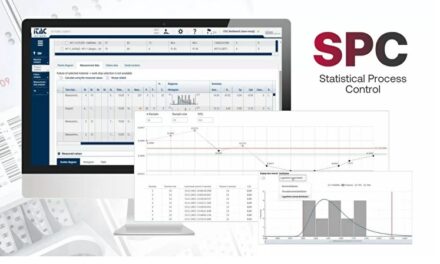Automate or die: the brutal reality
AUTHOR: Mycronic

Photo credit: Mycronic
As makers of automation technologies, it’s no surprise that we see automation as the number-one driver in our industry. What is interesting, however, is the speed, impact, and far-reaching implications of this global megatrend. Those who hesitate to get onboard risk being left behind.
“To my mind, it’s really very simple,” says Mycronic CEO and President Anders Lindqvist, a true internationalist who’s lived and worked around the world and spent a lot of time streamlining various types of factories. “Every manufacturing step that can be automated will be. That’s because every business wants to save time, increase quality and reduce costs.”
Combating rising labor costs
He notes that even markets like China, once regarded as the world’s low-cost manufacturing hub, are experiencing challenges with rising labor and materials costs. And while labor costs there are still considerably lower there than in Western countries, there is a growing push to automate further.
This is being fueled, in part, by waves of COVID-19 lockdowns and the roll-out of new productivity-boosting technologies, such as artificial intelligence (AI), machine learning (ML) and robotic process automation (RPA).
Data-driven systems
“When it comes to electronics assembly, we are seeing an intensified focus on factory-wide, data-driven systems with continuous feedback loops, in-line inspection and quality control versus only optimizing stand-alone machines,” says Anders.
“Another key focus is the automation of pre- and post-assembly steps using advanced robots and connected software.”
“We’re seeing an intensified focus on factory-wide, data-driven systems with continuous feedback loops, in-line inspection and quality control versus only optimizing stand-alone, machines.”
Customer-centric mindset
“Our core strategy is to make automation happen in ways that matter most for our customers,” says Lindqvist. While he acknowledges that this is a broad statement, it reflects the importance of having a customer-centric mindset.
“The market development is forcing all of us to think about output, not speed alone, in-line solutions vs individual machines, software vs only hardware.”
To meet new demanding requirements, Mycronic continues to invest in advanced automation systems around key technologies. The technologies may vary, but the focus is always on boosting total productivity and quality, using both software and hardware. In many cases, this means removing bottlenecks that are now arising due to labor shortages around the world.
Overcoming labor shortages
As a case in point, Anders Lindqvist notes how one US-based customer, VPT Components, overcame operator shortages by fully automating its die bonding process for manufacturing of JAN certified semiconductors. Traditionally, VPT had used manual and semi-automated equipment, but their labor force was stretched thin due to a severe labor shortage in the state of Massachusetts.
A fully automated solution
To meet rising demand, VPT identified the Boston-based MRSI System (part of Mycronic’s Global Technologies division), which offers fully automated, high-speed, high-precision, and flexible eutectic and epoxy die bonding systems. The machine’s ability to quickly switch among process recipes, combined with quick-change fixture and tooling, enabled the company to redeploy operators previously used in the die bonding area to other high-priority projects.
“This is just one of many examples of how Mycronic is supporting customers in the electronic industry with automated solutions,” Anders concludes.












